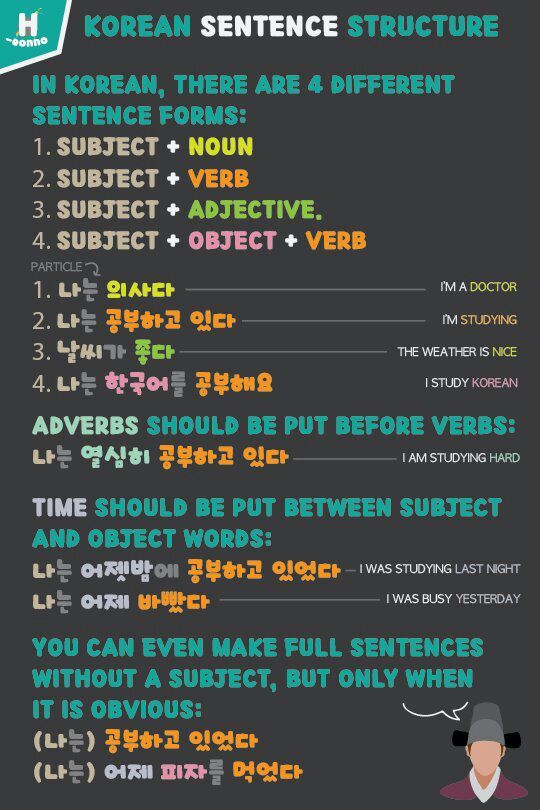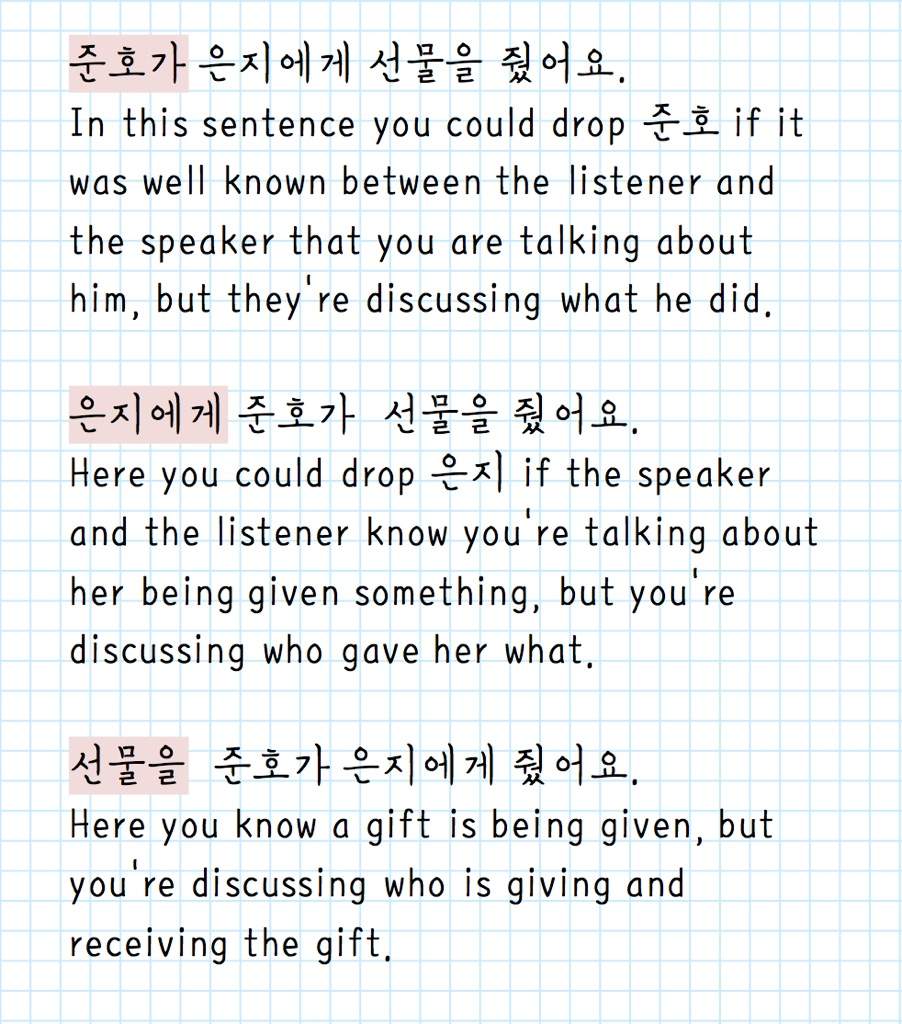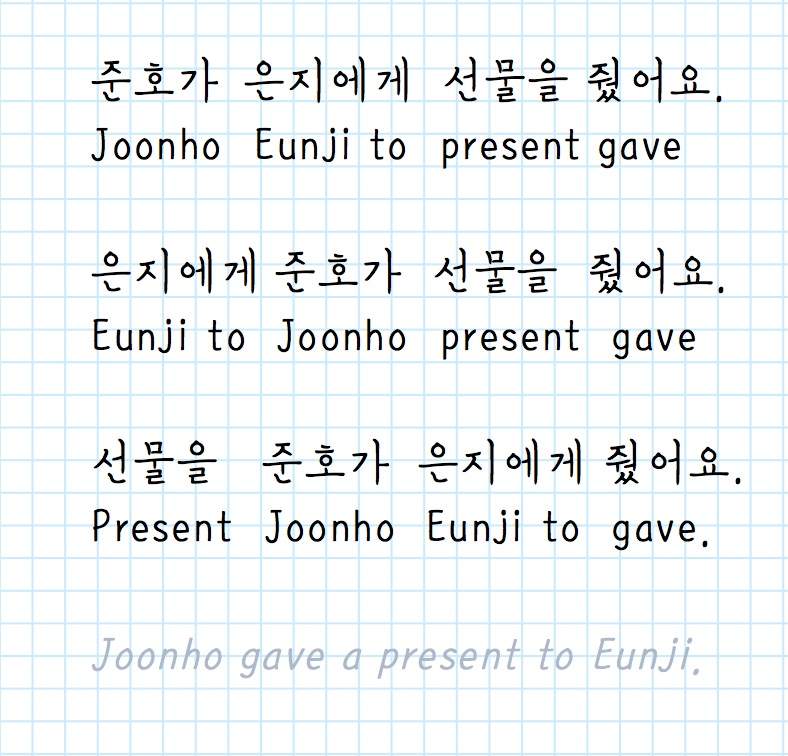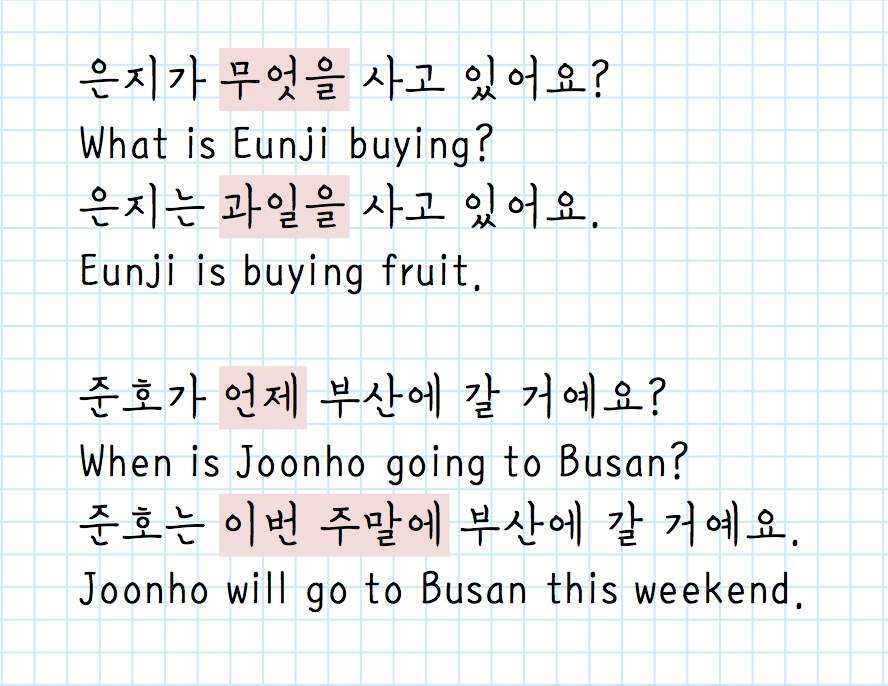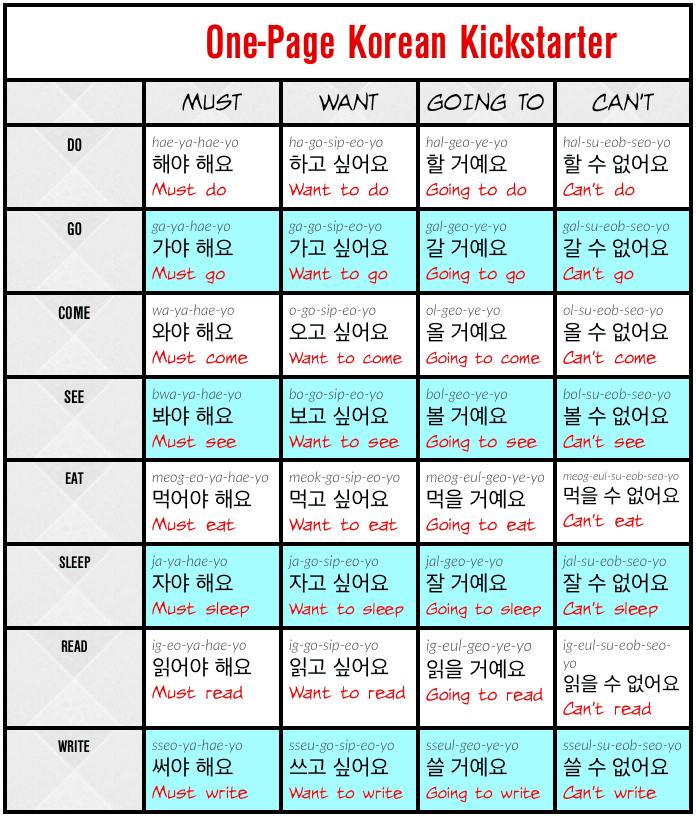How To Form Sentences In Korean
How To Form Sentences In Korean - This means you introduce the subject. The easiest way to make korean sentences is by conjugating korean verbs. 2.3.1 writing words with one syllable. Your essential guide to korean sentence structures! Quite specifically, you can use it as an adjective, as a form of agreement, or as a slang word used in korea. Basic korean grammar, on the other hand, uses the order: Web in this video lesson, we will teach you how to easily form korean sentences in korean! Eventually, you will learn hundreds of these particles, but here in these lessons, you will be introduced to the most basic ones (~고, ~고 싶다 and ~고 있다 to name a few). Because most of the time from here on you'll be framing sentences based on the speech levels. Subject + object + verb 수민이 영화를 봐요.
Because most of the time from here on you'll be framing sentences based on the speech levels. Determine whether your syllable ends with a vowel or a consonant. Conjugating a verb simply means putting an ending onto the verb. Although it is simple, this process is one of the most important fundamentals when forming korean sentences. Eventually, you will learn hundreds of these particles, but here in these lessons, you will be introduced to the most basic ones (~고, ~고 싶다 and ~고 있다 to name a few). I suggest you learn korean verbs, korean adjectives and korean phrases first. Korean, japanese, and to some extent german, all use sov in. Let’s look at some examples: So these are the 4 most common and basic. Table of basic korean sentences using subject marker.
2.3.1 writing words with one syllable. Conjugating a verb simply means putting an ending onto the verb. Let’s look at some examples: As was described above, there are a few different ways to say “sure” in korean. Basic korean sentences 1) i speak korean = i는 korean을 speak 는 is attached to “i” (the subject) 을 is attached to “korean” (the object) 2) i like you = i는 you를 like 는 is attached to “i” (the subject) 를 is attached to “you” (the object) 3) i wrote a letter = i는 letter을 wrote 는 is attached to. Web how are korean sentences structured? Korean, japanese, and to some extent german, all use sov in. Korean sentence structure and english sentence structure are a little different. Web in a typical sentence in korean which uses the verb ' to be ', the verb is placed at the end of the sentence. Web by the sentence ending ~ (스)ㅂ니다 , 아/어요 or 아/어.
Korean sentences 1 YouTube
Your essential guide to korean sentence structures! Basic korean sentences 1) i speak korean = i는 korean을 speak 는 is attached to “i” (the subject) 을 is attached to “korean” (the object) 2) i like you = i는 you를 like 는 is attached to “i” (the subject) 를 is attached to “you” (the object) 3) i wrote a letter =.
Korean Sentence Structure Korean School Amino
I suggest you learn korean verbs, korean adjectives and korean phrases first. Web how are korean sentences structured? Web learn how to form korean sentences by understanding 3 elements: Web how to form basic korean sentences. Subject (s) + object (o) + verb (v).
Sentence structure Korean Language Amino
Web sentences are made up of words so you should be able to read and write korean words. Subject + object + verb 수민이 영화를 봐요. The easiest way to make korean sentences is by conjugating korean verbs. But obviously ‘i’ and ‘you’ are nowhere to be found. The reason why is that one of the basic korean sentence structures.
MAking SIMPLE Korean Sentences Korean Language Amino in 2021 Korean
But obviously ‘i’ and ‘you’ are nowhere to be found. Web ukraine's overnight drone strike on moscow has been compared to the 9/11 attacks by a russian official. It’s important to learn conjugation as you progress in learning korean. Web 2.2.1 step 1: Subject (s) + object (o) + verb (v).
Sentence structure Korean Language Amino
2.3.1 writing words with one syllable. Korean words don’t have a gender. Web how to make sentences in korean (introduction to korean grammar) #koreangrammar #beginnerkorean. Web in this video lesson, we will teach you how to easily form korean sentences in korean! Leaving the verb or adjective alone to form a complete sentence.
Korean Sentences with Negatives Korean words, Korean words learning
Web in a typical sentence in korean which uses the verb ' to be ', the verb is placed at the end of the sentence. Table of basic korean sentences using subject marker. Eventually, you will learn hundreds of these particles, but here in these lessons, you will be introduced to the most basic ones (~고, ~고 싶다 and ~고.
46 best images about Koreaaa on Pinterest Sentences in english
Although it is simple, this process is one of the most important fundamentals when forming korean sentences. Korean, japanese, and to some extent german, all use sov in. So these are the 4 most common and basic. The base form is in korean is: It is absolutely compulsory for you to grasp the difference as soon as possible.
How to Form Korean Sentences ㅣ Basic Korean Lesson 01 YouTube
Subject + object + verb 수민이 영화를 봐요. As was described above, there are a few different ways to say “sure” in korean. Web how are korean sentences structured? :) i hope this will be useful. This is the best place to start learning the korean language!
Sentence structure Korean Language Amino
You will also learn about using 잘/못 in sentences. Let’s look at some examples: Although it is simple, this process is one of the most important fundamentals when forming korean sentences. The easiest way to make korean sentences is by conjugating korean verbs. Web by the sentence ending ~ (스)ㅂ니다 , 아/어요 or 아/어.
Learn the Korean Sentence Structure with this Simple Guide
2.3 korean writing practice with syllable blocks. Web korean grammar’s order is different from english. Korean sentence structure and english sentence structure are a little different. Word order, sentence ending and particles. 🤔 in this class, you are going to learn how to form a sentence in korean in a fun and relaxing environment.
Web How To Build Korean Sentences | Writing A Diary In Korean | Korean Grammar Learn Korean With Koreanclass101.Com 23K Views Streamed 3 Years Ago
Your essential guide to korean sentence structures! Web different ways to say “sure” in korean. Korean pronouns aren’t usually needed. Web the subject in a korean sentence is written at the start of the sentence.
Table Of Basic Korean Sentences Using Subject Marker.
Subject + object + verb 수민이 영화를 봐요. So these are the 4 most common and basic. You will also learn about using 잘/못 in sentences. In this sentence, 수민 is the subject and 가요 is the verb.
Below We Will Go Over How To Say “Sure” In Detail So That You Can Best Learn How To Apply Its Different Uses.
This means you introduce the subject. This is the best place to start learning the korean language! Korean verbs always come at the end of the sentence. For example, let’s say you’re going to use the verb “go” in a sentence.
Once You Can Conjugate A Verb, You Know How To Make A Korean Sentence!
Quite specifically, you can use it as an adjective, as a form of agreement, or as a slang word used in korea. As was described above, there are a few different ways to say “sure” in korean. Korean words don’t have a gender. Web korean conjugations in korean grammar determine the meaning, tense, tone, and mood of sentences.

